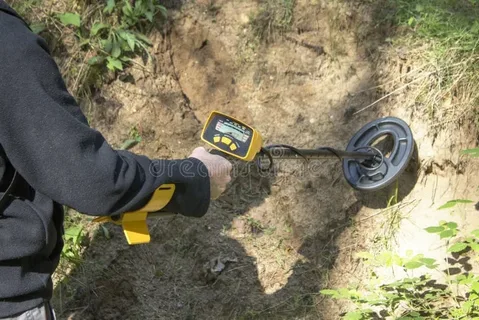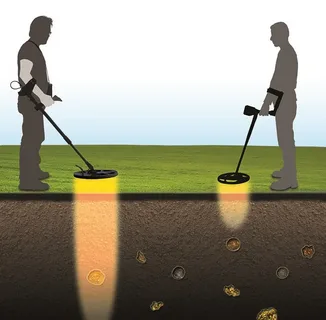Hardrock mining is a crucial industry that provides valuable resources for various sectors, but its impact on local communities is a topic of growing concern. This paper aims to explore the effects of hardrock mining on the social, economic, and environmental aspects of the communities in which these operations are located. By examining the experiences of these communities, we can gain a better understanding of the challenges and opportunities associated with hardrock mining and work towards developing sustainable solutions.
Exploring the Impact of Hardrock Mining on Local Communities involves conducting in-depth research on how mining activities affect the environment, economy, and social fabric of nearby areas. This includes investigating the effects of pollution, land degradation, and displacement of individuals and communities, as well as the potential benefits such as job creation and economic development. This type of study typically involves conducting interviews, gathering data, and analyzing existing literature to understand the full scope of the impact that hardrock mining has on local communities.
The Environmental Impact of Hardrock Mining in Remote Areas

Hardrock mining in remote areas can have significant environmental impacts. Excavation, blasting, and transportation activities can lead to soil erosion, habitat destruction, and water pollution. The use of chemicals such as cyanide and mercury in the extraction process can contaminate soil and water, posing risks to plant and animal life, as well as human health. Additionally, the construction of infrastructure like roads and power lines can fragment habitats and disrupt wildlife migration patterns. Proper regulation and monitoring of mining activities are crucial to mitigating these environmental impacts and preserving the natural ecosystems in remote areas.
Challenges and Opportunities in Modern Hardrock Mining Techniques

Challenges in modern hardrock mining techniques include the need for more sustainable and environmentally friendly practices, increasing energy and resource costs, and addressing safety concerns for workers.
Opportunities in modern hardrock mining techniques include advancements in technology such as automation and remote operation, the potential for increased mineral reserves through deep-sea and asteroid mining, and the development of alternative extraction methods that reduce environmental impact.
The Economic Importance of Hardrock Mining in Resource-Rich Regions

Hardrock mining plays a significant economic role in resource-rich regions by providing job opportunities and contributing to local and regional economies. It generates revenue through the extraction of valuable minerals such as gold, silver, copper, and uranium. These minerals are crucial for the production of industrial and consumer goods, including electronics, cars, and infrastructure materials.
The mining industry also supports local businesses such as suppliers, equipment manufacturers, and service providers, further stimulating the regional economy. Additionally, royalties and taxes from mining activities contribute to government revenues, supporting essential services such as education, healthcare, and infrastructure development.
Furthermore, hardrock mining can spur economic diversification and long-term investment in resource-rich regions, leading to the creation of new industries and technologies. However, it is essential to manage the environmental impact and mitigate any potential negative consequences of mining activities on local ecosystems and communities. Overall, the economic importance of hardrock mining cannot be overstated in resource-rich regions.
Exploring the History and Evolution of Hardrock Mining Practices

Exploring the History and Evolution of Hardrock Mining Practices involves delving into the various techniques and technologies used throughout history to extract valuable minerals from the Earth. This study typically covers the development of hardrock mining from ancient times to the present day, including the use of manual labor, hand tools, explosives, and modern machinery. It also examines the environmental and societal impacts of hardrock mining, as well as the ongoing efforts to improve safety and sustainability in the industry. Understanding the history and evolution of hardrock mining practices provides valuable insights for shaping the future of mining and resource extraction.
Addressing Safety Concerns and Regulations in Hardrock Mining Operations
Addressing safety concerns and regulations in hardrock mining operations is a critical aspect of ensuring the well-being of workers and mitigating potential harm to surrounding environments. Key factors include implementing proper ventilation systems to control dust and gases, regular equipment inspection and maintenance, providing proper training for workers, adhering to industry regulations and standards, and establishing emergency response protocols. Additionally, conducting regular safety audits and maintaining open communication channels with regulatory agencies is vital to ensure compliance with safety regulations and standards. Overall, prioritizing safety in hardrock mining operations is essential for the protection of workers and the environment.
Sustainable Practices and Innovations in Hardrock Mining Technology
Sustainable practices and innovations in hardrock mining technology focus on reducing the environmental impact and promoting the efficient use of resources. This includes the development of advanced machinery and equipment that minimize energy consumption and emissions, as well as the implementation of water recycling and waste management systems. Additionally, there is a growing emphasis on the use of renewable energy sources and the adoption of digital technologies to optimize operations and reduce overall environmental footprint. Research and development in this area continue to drive the industry towards more sustainable and responsible mining practices.
The Role of Hardrock Mining in Global Supply Chains for Metals
Hardrock mining plays a significant role in global supply chains for metals, as it is responsible for the extraction of valuable minerals such as gold, silver, copper, and iron ore. These metals are integral components in various industries, including construction, electronics, automotive, and renewable energy.
The extraction and processing of hardrock minerals require advanced technology and large-scale industrial operations. This involves drilling, blasting, and crushing of the ore, followed by the extraction of the desired metals through chemical processes. Once extracted, these metals are refined and transported to manufacturers around the world.
The global supply chain for metals relies heavily on hardrock mining to meet the growing demand for raw materials. However, this industry also raises concerns regarding environmental impacts, including habitat destruction, water contamination, and air pollution. Efforts to mitigate these impacts and promote sustainable practices are essential for the future of hardrock mining in global supply chains.
Community Impact and Engagement in Hardrock Mining Communities
Community impact and engagement in hardrock mining communities is a complex and multifaceted issue that encompasses social, economic, and environmental considerations. Mining operations often have significant effects on the local community, including changes in the local economy, public health, and the environment. Additionally, mining activities can create both positive and negative impacts on the host community’s social fabric and cultural identity.
Effective engagement and collaboration with local stakeholders can help mining companies address community concerns and mitigate negative impacts. This may involve creating opportunities for local employment, supporting education and training programs, and participating in community development initiatives. Additionally, transparent communication and meaningful consultation with community members are essential for building trust and fostering positive relationships.
Mining companies are increasingly recognizing the importance of community engagement and are developing strategies to promote social responsibility and sustainability in their operations. This may involve establishing community relations departments, engaging in corporate social responsibility projects, and adhering to industry best practices for community engagement. Ultimately, mining companies must work closely with local stakeholders to ensure that their operations are conducted in a responsible and sustainable manner that benefits the community as a whole.
Adapting to Climate Change Challenges in Hardrock Mining Operations
See also: america’s gold
Adapting to climate change challenges in hardrock mining operations involves implementing strategies to address issues such as extreme weather events, water scarcity, and changing environmental regulations. This may include using more water-efficient processes, investing in renewable energy sources, and developing new technologies to minimize the environmental impact of mining activities. Additionally, mining companies can also work to strengthen community partnerships and engage in collaborative efforts to address climate change challenges. By taking proactive measures to adapt to these challenges, mining operations can minimize their environmental footprint and contribute to sustainable development.
The Future of Hardrock Mining: Trends and Forecasts for the Industry
The future of hardrock mining is expected to be shaped by several key trends and forecasts for the industry. One major trend is the increasing focus on sustainable and responsible mining practices, driven by growing environmental and social concerns. This includes a shift towards cleaner energy sources, water conservation, and minimizing the impact on local communities.
Technological advancements are also expected to play a significant role in the future of hardrock mining, with the industry increasingly leveraging automation, data analytics, and artificial intelligence to improve efficiencies and reduce costs. This includes the use of advanced drilling and blasting techniques, as well as innovations in mineral processing and waste management.
Furthermore, the growing demand for critical minerals, particularly for renewable energy technologies and electric vehicles, is expected to drive investment and exploration in hardrock mining. This will likely lead to increased competition for access to mineral resources and the development of new mining projects in various regions around the world.
Overall, the future of hardrock mining is likely to be characterized by a combination of sustainability efforts, technological advancements, and evolving market dynamics, all of which will shape the industry in the years to come.










